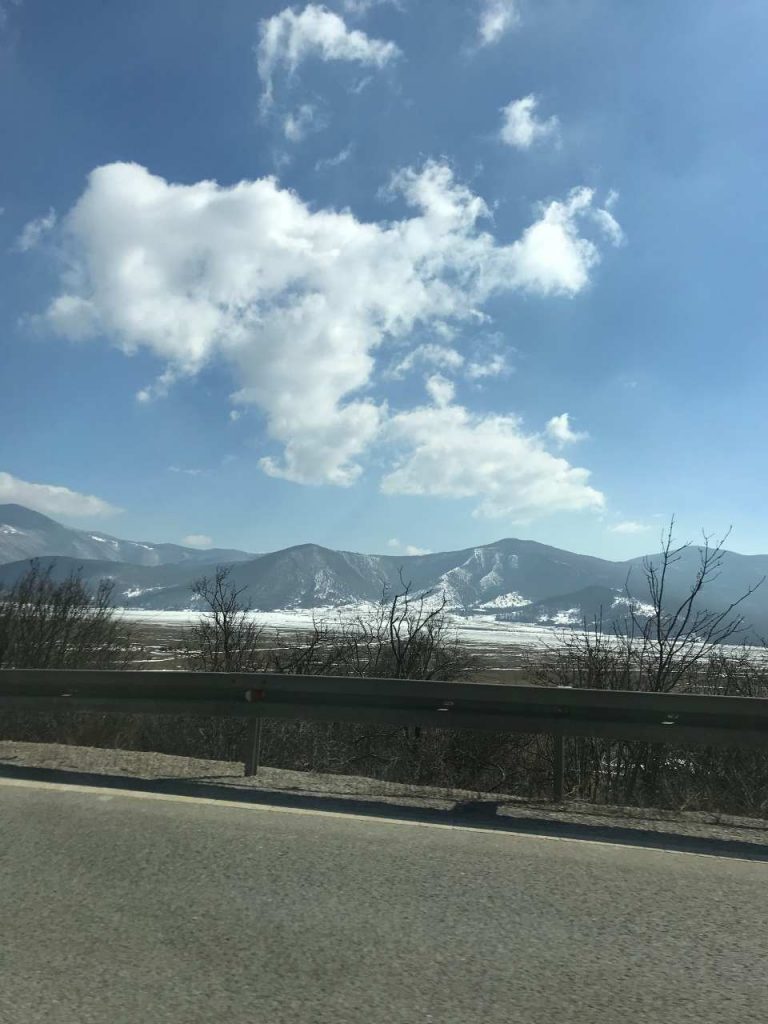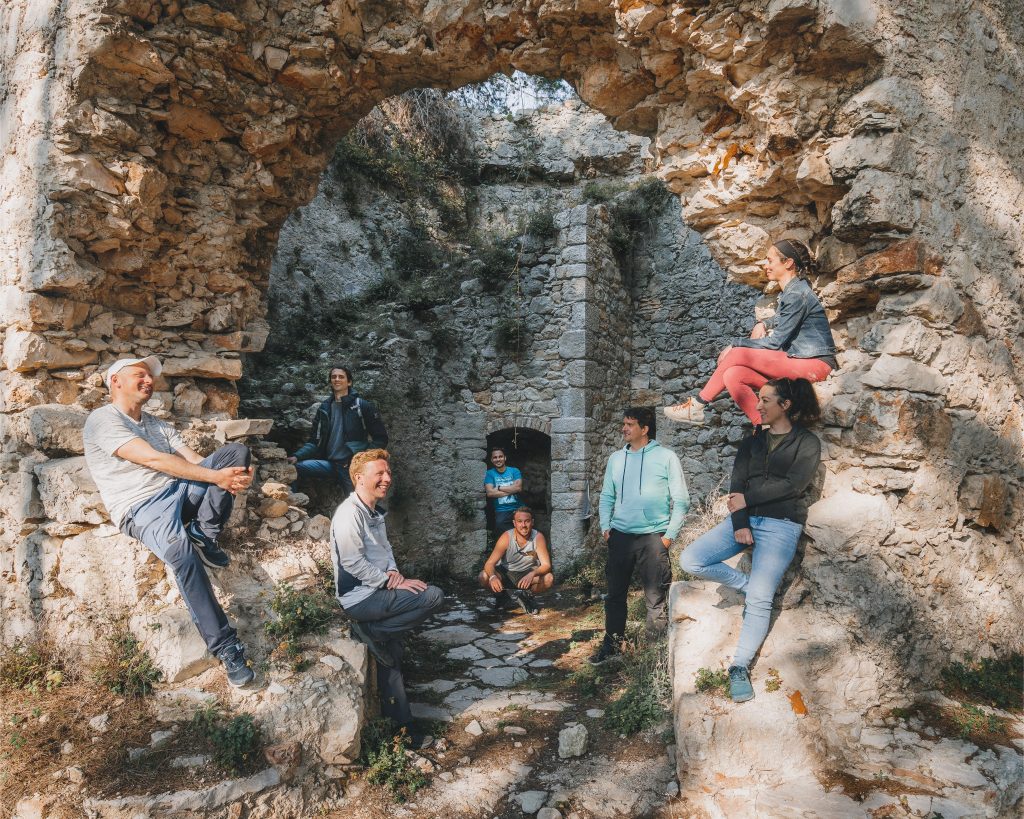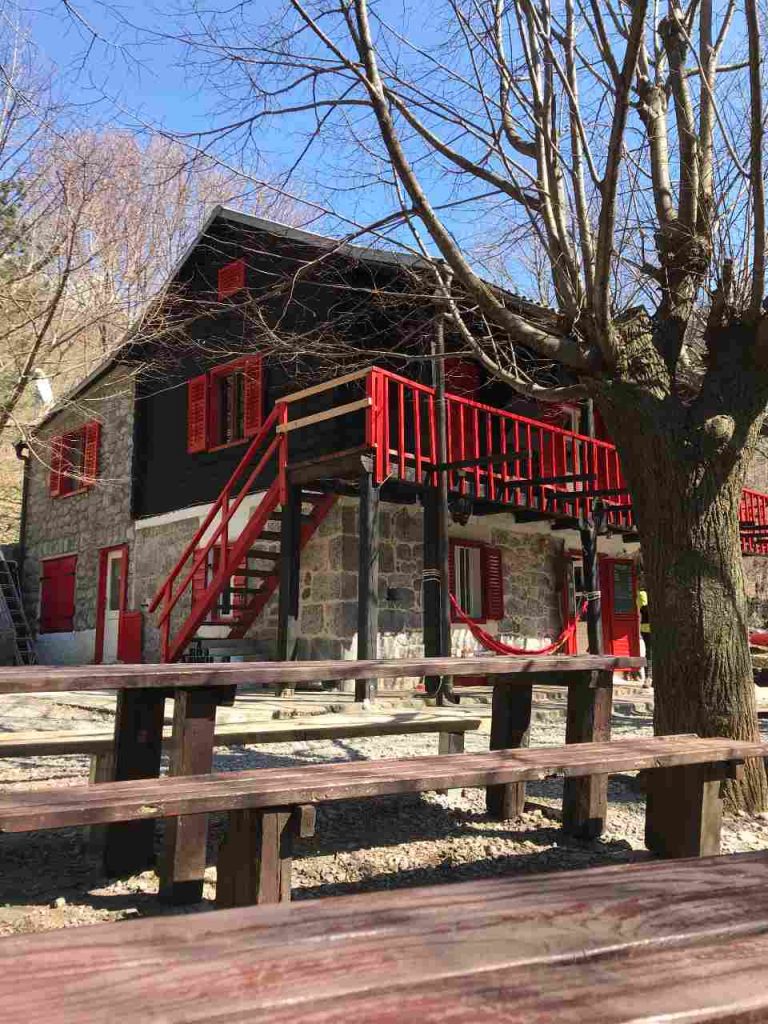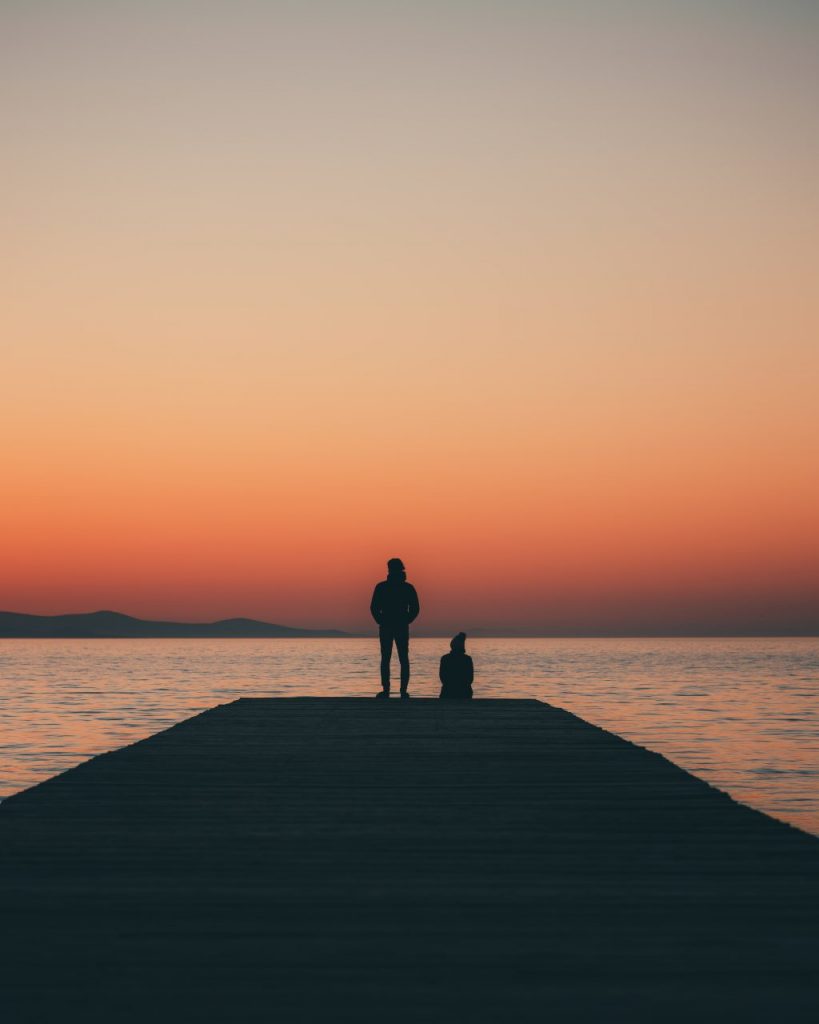Travel of the right kind is what opens our hearts and minds. It’s what makes us better versions of ourselves if we simply slow down and consider the positive impact of our adventures. By slowing down we can better connect with our surroundings and create more meaningful connections with the local communities along the way. If you believe that travel can be a force for good, you’re in the perfect place my friend.
Pre-warning: If you love rushing from place to place – ticking off the must-see hot spots – all to get the perfect Instagram story – good for you my love. But this might not be your kind of story.
Location: Croatia
Duration: 1 month
Season: Spring
Sustainable travel in Croatia…
We’d planned to stay 3 months in Croatia but only ended up staying 1. Despite cutting the trip short, the experiences we had, the people we met, and the lessons we learned made it a memorable and very worthwhile part of our journey around Europe.
As a sustainable, eco-conscious traveller, I couldn’t help but notice that Croatia as a country isn’t leading the way (it’s not exactly a Costa Rica). Croatia’s sustainable travel journey appears to be in its infancy and the options for eco-stays were limited at best.
Although there is one place in particular that is leading the way for sustainable, transformative travel. Linden Tree Retreat lies in the heart of the UNESCO Velebit Mountains. A nature, ranch-style retreat founded by Bruce Yerkovich.
More from the series…


A place most people skip…
Croatia’s capital city isn’t its most popular destination. In fact, many visitors skip the capital of Zagreb altogether. Yet for us, the city of Zagreb was our starting point, and we stayed at the Green Dream guest house.
Nestled at the edge of a forest this eco-conscious guesthouse was only 15 minutes away from the city. Run and owned by a local Croatian family with a passion for nature, composting, gardening, and art, it was the perfect place to begin the journey.
After catching a taxi with a lovely lady who’d left turmoil in Nigeria to start a life in Croatia, we strolled around the central part of Zagreb. With pretty architecture and a laid-back outdoor cafe vibe, it was a great place to explore. Stopping at this cute cafe, hidden in an alleyway we got our first taste of Croatian cuisine. Strukli is cheese-filled dough and is absolutely delicious.
When driving through the city, some parts of Zagreb looked in desperate need of some love. It was a great city to see but it wasn’t somewhere we personally felt we could dwell.



Off-peak season is always best…
After contacting a local business, run by a small team of Croatian women, they organised for Ivan to take us on a road trip from the city of Zagreb, across the country to Split on the coast.
Ivan was not only a driver, he was an experienced cameraman, who’d worked on various documentaries including a recent David Attenborough film. With many a story to tell he was a great companion for a road trip. The pandemic had reduced the opportunities for filming, so he was finding work where he could and had even started a new venture of growing Lion’s Mane mushrooms to help people with Alzheimer’s.
During the road trip, we visited the Plitvice Lakes which was a real highlight. Mid-week, low season, it was the perfect time to see this natural wonder, we only saw 1 other person. I cannot imagine this place has the same charm and magic with crowds of people.
A great way in which to be a more eco-conscious or sustainable traveller isn’t just about where you stay, but to consider ‘when you go’. Choosing low season, or off-peak provide better travel experiences, the locals are usually happier at this time, and it helps combat ‘unbalanced’ or over tourism in destinations or in sightseeing spots, as the amazing Doug shows here.



Keeping money local…
It was apparent during our Croatian road trip that the crystal clear blue waters, touristy beaches and game of thrones inspired cities are just one side of the story. With war wounds still visible in some buildings, almost forgotten-looking villages and towns, the tourism money and work opportunities it brought to the country appeared to be quite unbalanced.
I loved the opportunity of taking a road trip with Ivan across Croatia, and staying with a local Croatian family in Zagreb; as I not only enjoy the richer experiences travel brings when we connect with a local people, but also a key part of sustainable travel is about being conscious of ‘tourism leakage’.
Tourism leakage is when little of the money you spend on a holiday ends up in the pockets of the community you visit. Instead, it ends up ‘leaking’ out.
The UN estimates: For every USD 100 spent on tourism in developing countries, only about USD 5 goes back into the local economy. Most all-inclusive packages result in an 80% leakage.



Split wasn’t love at first sight. There was plenty to explore, such as the old town and a few nearby hikes, but we didn’t click with the place or feel like we could dwell, so after a week we decided to keep exploring Croatia. One thing we loved in Split was the choice of vegan and plant-based restaurants. Below I recommend our favourite restaurant.
Digital Nomad Village…
When we discovered there was a digital nomad village in Zadar, we thought it would be great to hang out with some fellow nomads again, as we did in Madeira last year. So, we headed on over to Zadar, where some of the best sunsets in the world are said to be found.
Zadar was our final stopping point in Croatia before we crossed the border into Slovenia.






Below are my top 5 recommendations for Croatia. All are based on moments that were truly memorable and stood out above the rest.
Top 5 recommendations for things to do in Croatia
1. Visit Paklenica Mountain Hut, Velebit Mountains
This gem of a mountain hut is located along the Velika Paklenica stream, about 6 km away from the main parking lot. The path takes you into the Paklenica National Park, a gorgeous wilderness area in central Croatia about an hour’s drive east of Zadar.
When you arrive Irena’s smile is the first thing you’ll see, she’s the owner, and a larger-than-life character with incredible stories to tell. The first female mountain host in Croatia, her unique story has attracted interest from both Croatian and international media.
Welcomed in like an old friend, we enjoyed a delicious vegetarian meal and plenty of shots! Exactly what you’re looking for after a steep ascend 🙂
We didn’t stay overnight, but it looked like a cool experience. Although you’ll need to bring your own bedding and lots of it, as it gets very cold at night.
Top tip: Time your walk back to the car park so you can watch the sun descend behind the rock formations. The colours are simply magical and at points breathtaking.





2. Hike to St Michael’s fort on Ugljan Island, Zadar Archipelago
Ugljan is a beautiful island in Croatia near Zadar, it’s also known as ‘green island’. Expect a beautiful unspoiled landscape full of olive trees, green pine forests, and fig trees.
The island is easy to get to by ferry but hasn’t yet been discovered by too many crowds.
Top tip: If you love a bit of history and hiking, I recommend the trail to St Michael’s Fortress. Not the easy one straight up the hill, but the one the locals take, around the cliff edge, with incredible views out to sea.





3. Visit Pandora Greenbox in Split, for the best veggie burger ever!!!
We really enjoyed the food here, so much so we kept coming back. The beetroot burger and cocktails were both stunning. The plant-based focus, wooden menus, plants growing up the walls, and bar carved around the tree, made it memorable and fun.













4. Plitvice Lakes National Park, central Croatia.
Crystal clear waters and beautiful waterfalls, Plitvice Lakes was one of the highlights of our travels to Croatia. It’s made up of a system of 16 lakes, with over 90 waterfalls. On a sunny day the water sparkles and it looks like somewhere that you could expect a fairy to pass you by.
When we arrived, I was really happy to hear they had stopped people swimming in the lakes many years ago to better protect it, as well as the flora and fauna here, particularly from sunscreen pollution.
Top tip: If you want to really enjoy this place, and connect with the incredible nature here, visit during the week, not the weekend. And definitely not in peak season.




5. Watch a Sunset (or better yet many sunsets) in Zadar
“Zadar has the most beautiful sunset in the world” these words were uttered by filmmaker Alfred Hitchcock in 1964 – and he wasn’t wrong. Walking down from our digital nomad accommodation to the pier every evening, we came to realise across 14 different sunsets, no one was ever the same.
From purple to pinks, with 100 different shades of yellow and orange – the shimmering of the ocean surface created something hard to put into words.
Top Tip: Most people watch the sunset from the sea organ in Zadar, but you can expect lots of people here. If you prefer peace and quiet, I recommend heading to a quieter beach.






2 Lessons From Nature: Croatia
1. Consciously celebrate the seasons
We, humans, evolved as a part of the natural world, deeply and inextricably connected to it. But somewhere along the line, we have removed ourselves from nature. So, when we choose to deepen or reestablish our connection with nature and its cycles we do so with ourselves.
When there is a seasonal change, it is not just another date on the calendar, this time represents the change in nature’s energy, which is deeply connected to our own energy.
When I met Gillie, a wild yoga teacher based in Zadar, and was invited with warm, open arms to celebrate the Spring equinox I was curious. With the spring Croatian sun-basking overhead, and surrounded by trees, we rolled out our yoga mats.
With winter over, we let the ‘old’ peel off and focused on ‘growth’ and new beginnings. Through meditation, movement, and verbal teachings inspired by nature, this ‘seasonal’ experience tapped into something I felt I’d never be able to ignore again.
“All things in nature undergo a process of birth, growth, decline, and death.”
Understanding how and why each season of the year differs from the others, and paying attention to the different energies, smells, sounds, and colours throughout the year – these things connect us to something ancient, and important and create a habit of reconnecting with what matters most, which ultimately enriches our lives.
It’s crazy to think it took me 33 years to consciously tune into the turn of a season.
Since this experience, I’ve read countless blogs about people who’ve embarked on a journey of seasonal living – and it seems to be one of the most nourishing and transformational experiences you can do. I cannot wait for another season to do it all again.






2. Tuna Farming Is Bad Business
“What’s that?” I asked pointing out towards the horizon that evening.
Our Croatian boat skipper for the day immediately responded, “Oh, those are fishing boats, they’re heading out to fish for sardines. Not for human consumption, but for the tuna farms we have here in Croatia. Once the tuna is big enough, they’re then shipped out to Japan.”
With my face of astonishment, he then points to an empty, luxurious, mansion perched on an idyllic island where our boat is moored and says, “the guy who owns that house, owns the tuna farms around here.”
Today, farmed tuna is one of the most successful Croatian export projects.
So, I decided to read up about it. Tuna-ranchers want their fish to gain weight as quickly as possible. They are fed oily fish (like sardines) in huge numbers, which is why we were seeing this.
I later read, the European Commission called on Croatia to tighten control of their tuna farms.
“93% of all estimated fish stocks that exist in the Mediterranean Sea, including the Adriatic Sea, are in a very bad state, meaning that people have been able to push the marine ecosystems to the limit,” WWF Adria.
5 things you need to know about Tuna…
- In the wild, Bluefin tuna move constantly and migrate seasonally, often over incredible distances. They can swim more than 100 miles in a day—with a top speed of 40 miles per hour. So, swimming in circles in a fish farm is like you or me being stuck in a bathtub for years. And no they don’t have 3-second memories, find out more here.
- Tuna are essential for a healthy ocean ecosystem, the role they play cannot be underestimated. By swimming, diving, eating and excreting, tuna mix water layers, store carbon and cycle nutrients that fuel the whole ocean food chain.
- “Tuna flesh is loaded with heavy metals that can attack heart muscle. The toxicity outweighs any possible health benefits of omega-3 fatty acids. According to a study published in the American Heart Association’s journal, men with the highest levels of mercury increased their risk for heart disease by 60 percent and their risk of dying of a heart attack by 70 percent.” – PETA
- Tuna are not naturally suited to being raised in fish farms. They require lots of room. Because this practice is still developing, the majority of farmed tuna are actually caught in the wild to begin captive fish stocks.
- “The tuna are captured at various stages of their life-cycle, from juveniles weighing less than 8kg to large specimens. The capture process doesn’t differentiate. Those fish taken before sexual maturity (5-8 years) miss the chance to procreate, a big problem for a species in big trouble.” – Just One Ocean
I personally choose not to eat tuna, discover more about ‘what a fish knows’ here.
Whether eating farmed or wild tuna, we’re driving this incredible keystone species to extinction. My advice is to put down the fish fork and pick up a safer source of omega-3s, for your health if not for the oceans, such as walnuts and flaxseeds.






Do you have an eco-friendly hotel or sustainable retreat in Croatia? Then we’d love to hear from you. Click here to take the first step and we’ll be in touch very soon. We’d love to share your place with the world of eco-conscious travellers and businesses out there.
If you enjoyed these travel recommendations and lessons learned, why not explore Madeira here, a popular place for hikers and nature-lovers.
If you feel inspired to find out more about sustainable, slow travel visit my channel here.

